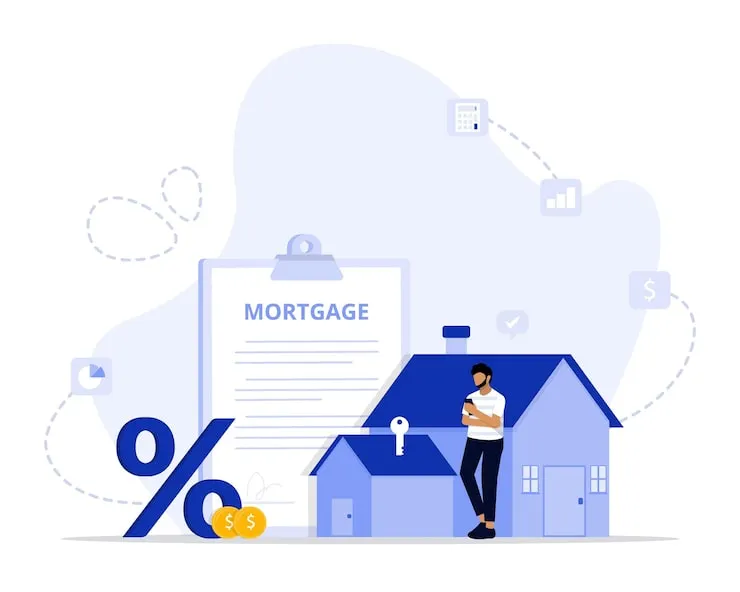Buying a home is a dream for many, but before you can get the keys, you need to qualify for a mortgage. Lenders carefully review your financial situation to determine if you’re a reliable borrower. Understanding what they look for — and preparing in advance — can significantly increase your chances of approval.
This article breaks down the key steps to qualify for a mortgage and explains what lenders evaluate when reviewing your application.
🔹 Step 1: Check Your Credit Score
Your credit score is one of the first things lenders check. It reflects your borrowing history, repayment habits, and overall creditworthiness.
✅ What Lenders Look For:
- A score of 620 or higher is generally required for most conventional loans.
- Higher scores (740+) can help you qualify for better interest rates.
💡 Tips to Improve Your Credit Score:
- Pay bills on time.
- Reduce credit card balances.
- Avoid applying for new credit before a mortgage.
🔹 Step 2: Review Your Income and Employment
Lenders want to ensure you have a steady income to make your mortgage payments consistently. They typically review your employment history, pay stubs, and tax returns.
✅ What Lenders Look For:
- Stable employment (usually at least 2 years in the same field).
- Reliable income from full-time work, self-employment, or other verified sources.
💡 Pro Tip:
If you’re self-employed, keep detailed financial records, including profit and loss statements and tax returns for the past two years.
🔹 Step 3: Calculate Your Debt-to-Income (DTI) Ratio
Your Debt-to-Income (DTI) ratio shows how much of your income goes toward paying debts each month.
✅ What Lenders Prefer:
- DTI below 43% is ideal for most mortgage types.
- Lower DTI means less financial risk for lenders — and a better chance of approval.
💡 How to Lower Your DTI:
- Pay off small debts.
- Avoid taking new loans before applying.
- Increase your income (if possible).
🔹 Step 4: Save for a Down Payment
Most lenders require a down payment — the portion of the home’s price you pay upfront.
✅ Common Down Payment Requirements:
- Conventional loans: 3%–20%
- FHA loans: As low as 3.5%
- VA and USDA loans: 0% (for qualified borrowers)
💡 Tip:
The more you put down, the lower your monthly payments and interest rates can be.
🔹 Step 5: Gather Important Financial Documents
Before you apply, organize all the documents lenders typically ask for.
📄 Required Documents:
- Recent pay stubs
- Tax returns (last 2 years)
- Bank statements
- W-2 forms or 1099s
- Proof of any additional income sources
Having these ready can speed up your approval process.
🔹 Step 6: Get Pre-Approved for a Mortgage
A mortgage pre-approval helps you understand how much you can borrow and shows sellers you’re a serious buyer.
✅ During Pre-Approval, Lenders Will:
- Pull your credit report.
- Verify your income and assets.
- Estimate your loan amount and interest rate.
💡 Why It Matters:
Getting pre-approved strengthens your position when making an offer on a home.
🔹 Step 7: Avoid Major Financial Changes
Once you apply for a mortgage, avoid making big financial moves until closing day.
⚠️ Don’t:
- Apply for new credit cards or loans.
- Make large purchases (like a car).
- Change jobs unexpectedly.
These changes can affect your credit score or DTI ratio, potentially delaying or jeopardizing approval.
🔹 Step 8: Understand the Type of Loan You Qualify For
Lenders offer different mortgage types based on your financial profile.
🏡 Common Loan Options:
- Conventional loans – Best for borrowers with strong credit and steady income.
- FHA loans – Easier qualification for those with lower credit scores.
- VA loans – For eligible veterans and active-duty service members.
- USDA loans – For buyers in rural or suburban areas with moderate income.
🔹 The Bottom Line
Qualifying for a mortgage isn’t just about income — it’s about proving you’re a responsible borrower with stable finances. By improving your credit score, managing debt, saving for a down payment, and organizing documents ahead of time, you can make the approval process smooth and successful.
Whether you’re a first-time homebuyer or refinancing, knowing what lenders look for will help you secure the best possible mortgage for your financial future.

